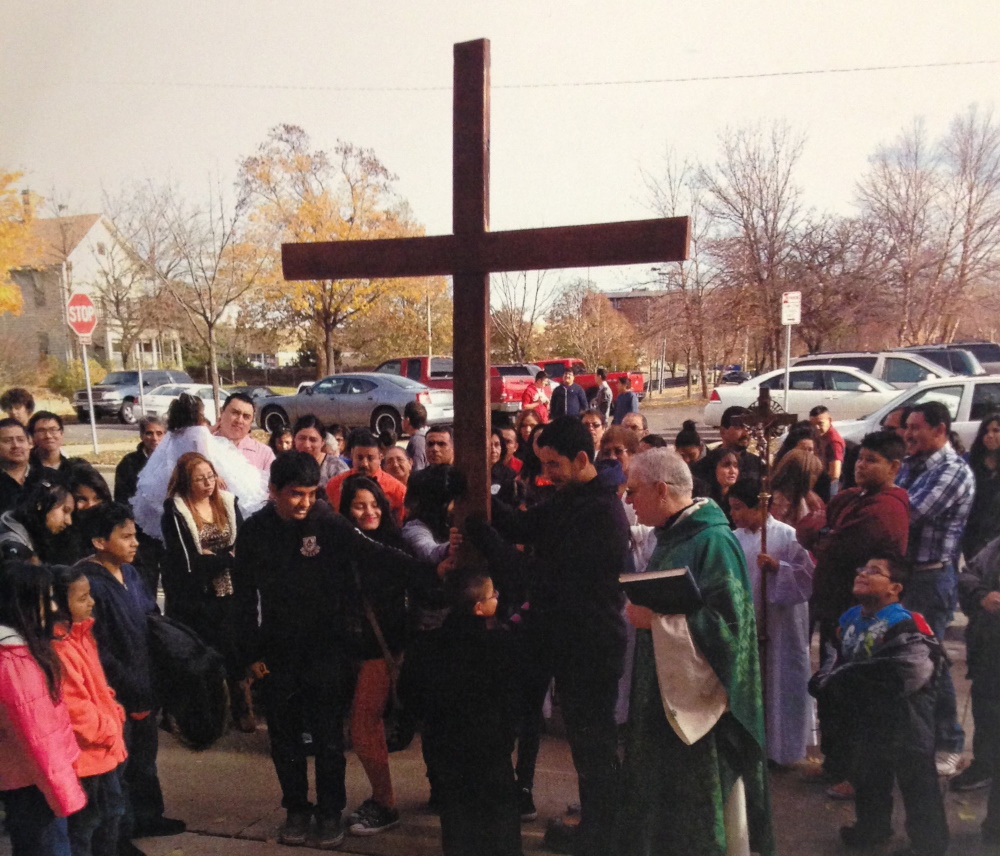When I was a kid, we didn’t talk about “rites.” We didn’t really even talk about “liturgy.” The only thing in our world was “the Mass.” I was in high school before I realized the church has a whole constellation of rites. But even then, we didn’t use the term “rites.” We talked about “prayer services” and “paraliturgies.”
The change in the way we talked about the rites was initiated at the Second Vatican Council where the bishops called for a revision of the liturgical books (see Constitution on the Sacred Liturgy, 25). As each of the books were revised, they were give titles in Latin that all began with “ordo” (e.g. Ordo Confirmationis for the sacrament of confirmation; Ordo Paenitentiae for the sacrament of reconciliation; Ordo Initiationis Christianae Adultorum for adult initiation). As the books were translated from Latin into English in the 1970s and 80s, “ordo” was rendered as “rite.”
As the then-new liturgical books began to appear and be used in parishes, we more often began to talk about “rites.” But what is a rite? It is more than just a prayer service. A rite is a ritual, but it is a particular kind of ritual. It is meant to do something.
What do rites… do?
In human culture, there are three kinds of rites. There are rites that are meant to get a deity or nature to do something extraordinary—like send rain during a drought. Rites like this are in the realm of magic and spells.
There are rites that separate us or protect us from evil forces or demons. Think of using garlic to ward off vampires or wearing an amulet to keep evil at bay.
And then there are rites that are meant to bring us into the presence of the Holy and facilitate a relationship between us and the Divine. This third type of rite is what all Christian liturgy is.
Christian rites, although they find their source in God’s action, are not foreign to human experience. The rites are based on some fundamental human activity such as bathing, anointing, and dining.
Christian rites, although they find their source in God’s action, are not foreign to human experience. The rites are based on some fundamental human activity such as bathing, anointing, and dining. What makes them rites is that, through the inspiration of the Holy Spirit, we infuse these actions with symbolic meaning. In a sense, God designed humans to do things that would reveal who God is. And once we catch a glimpse of who God is by doing these things, we do them again and again so we can know more and more deeply who God is.
This is important for catechumenate teams to understand because the core question for many of our seekers is, “Who is God?” If you grew up memorizing the Baltimore Catechism, you have a ready answer for that. But the catechism answer isn’t really an answer. The only way that God is fully revealed and the only way we can be in a true relationship with God is through the “language” of rite. Liturgical theologian, Edward Kilmartin, SJ, said that “the proper language for responding to Divinity is the social language of the rite” (cited by Roger Grainger in The Language of Rite, 45).
What does this mean for seekers?
What that means is all the other forms of human speech fall short of revealing who God is. We can point out to the seekers what the catechism says, we can show them a video of a Jesuit theologian explaining who God is, we can ask a local seminarian to describe what he learned in class about God, we can even quote the saints. But the fullest, deepest, clearest, most human expression of “God” happens when we gather for worship.
The difficulty here is that we have lost the language. In Pope Francis’s June 29 apostolic letter on liturgical formation, he said that “modern man has become illiterate, no longer able to read symbols; it is almost as if their existence is not even suspected.” He quotes German theologian Romano Guardini who wrote, “Here there is outlined the first task of the work of liturgical formation: man must become once again capable of symbols” (44).
The only way that God is fully revealed and the only way we be in a true relationship with God is through the “language” of rite.
It seems to me that this should be our first task with seekers as well. We have to teach them how to become “capable of symbols.”
Well, not exactly that. Jesus is the master catechist who will teach seekers the symbolic language of rite. So we are not so much teachers as we are companions, accompanying the seekers on the journey of faith as they are led more deeply into the Mystery. In a future post, we’ll look at how we do that.
Your turn
What do your seekers and catechumens experience in the rites at your parish? What questions do they ask before and after? What questions do you have? Share your thoughts in the comments below.











